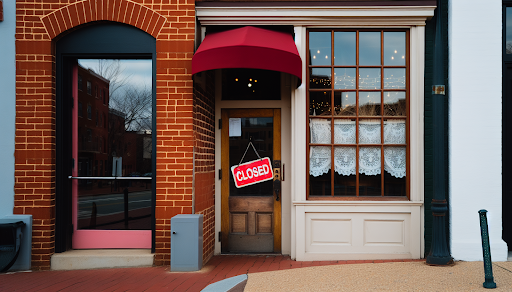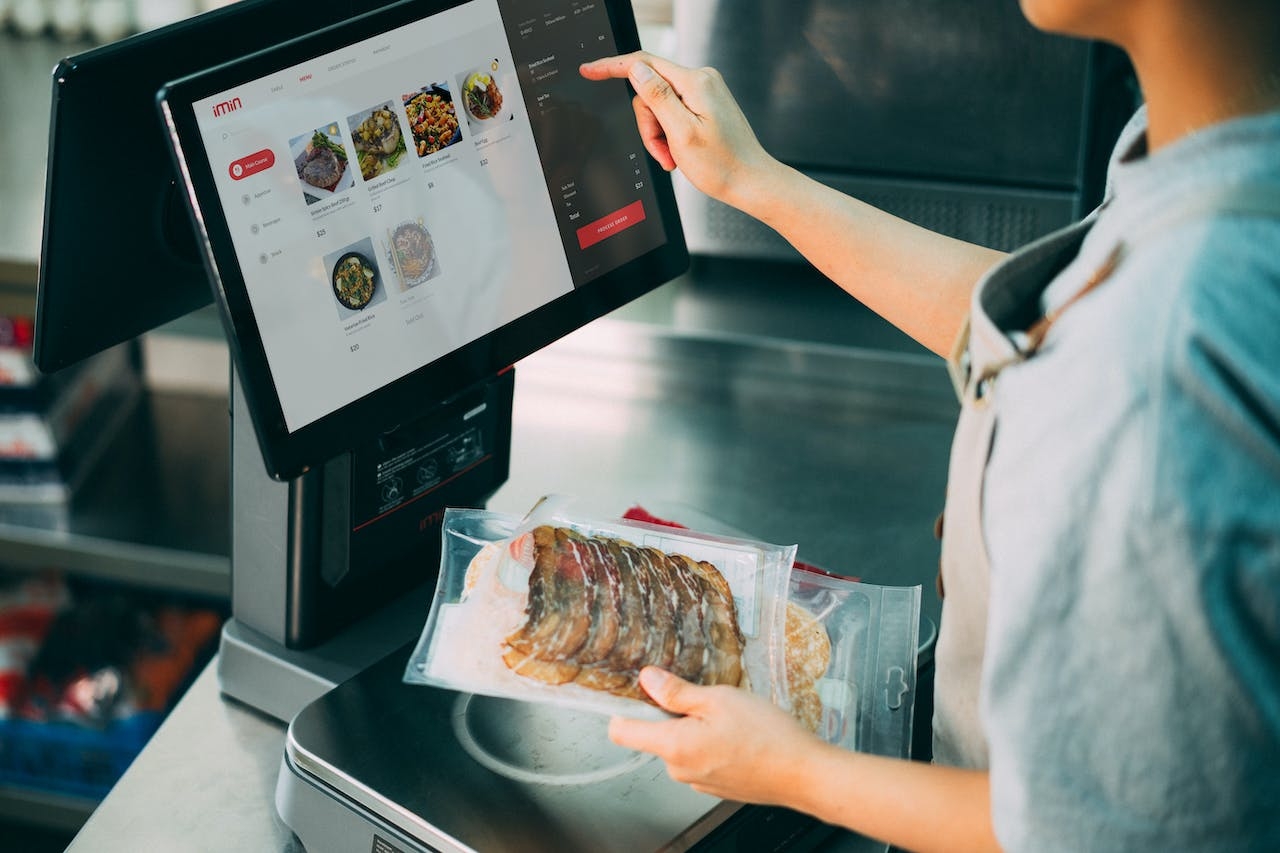Understanding Why Do Restaurants Fail
By Morten Numrich · 1. February 2024
Restaurants are often dream ventures, but why do restaurants fail? In the high-stakes world of dining, success hinges on more than just good food.
Common pitfalls like poor financial management, underestimating capital needs, and neglecting customer engagement often lead to a restaurant’s premature closure.
In this article, we probe the sobering statistics of restaurant failures and unpack the critical missteps that can spell disaster for these businesses.
Essential Insights
- Your restaurant’s more likely to sink than sail, with 60% failing in year one and 80% deep-sixed by year five.
- Stave off disaster with a cocktail of meticulous planning, a cash cushion, and tasty marketing to keep patrons hooked.
- Create a five-star experience with a killer business plan, a crew that’s sharper than your kitchen knives, and the agility to ride the wave of trends.
The Reality of Restaurant Failure Rates
 closed restaurant
closed restaurant
The restaurant industry is as thrilling as it is treacherous.
With a high restaurant failure rate, restaurant failure rate statistics paint a sobering picture – 60% of restaurants shutter within their first year, and a staggering 80% close shop within five years of opening.
This failure rate is not a mere coincidence, but the result of various factors that we’ll delve into shortly.
Independently-owned restaurants face particularly brutal challenges.
Restaurant owners, especially those with so many restaurants, face a daunting 10% chance of surviving past their first year.
After three to five years of operation, a grim fate awaits seven out of ten restaurants.
What makes so many restaurants succumb to these dismal odds? We will explore this further.
Factors Contributing to Restaurant Failures
Several factors contribute to the downfall of a failing restaurant in this challenging culinary landscape, and understanding the reasons why restaurants fail can help prevent such a fate.
In fact, many restaurants fail due to the triumvirate of trouble which includes poor planning and management, insufficient capital💲 and cash flow, and inadequate marketing and customer engagement.
We will explore each factor and examine how they can transform a bustling eatery into a deserted establishment.
Poor Planning and Management
Firstly, we will discuss planning and management. In the restaurant business, going in without a plan is like walking into a kitchen without a recipe – a potential disaster.
Industry experience is invaluable, providing insights into essential aspects like financial management and marketing strategies.
Without a robust business plan, even the most delicious dishes won’t save your restaurant from sinking into oblivion.
Moreover, poor staff management can lead to constant turnover and an unhealthy work environment, both of which can impact customer satisfaction and increase food waste.
By investing in manager training and resources, restaurants can create a strong team and a smooth-running operation.
Insufficient Capital and Cash Flow
Moving on to the issue of capital – or the lack thereof. In the restaurant business, cash is the lifeblood that keeps the operations running.
However, operating capital poor location can be a major challenge. Initial expenses such as:
- equipment
- food
- renovations
- marketing
can rack up a total cost of around $375,000 on average, making it crucial to have sufficient operating capital.
However, money management doesn’t stop once the restaurant opens its doors.
Keeping a close eye on daily earnings and food costs is imperative to ensure profitability, given the slim profit📈 margins that often range between 2% and 6%.
Moreover, overspending on non-essential items can drain funds and put the business at risk. Hence, having ample operational capital serves as a financial safety net, especially in the early days.
Striving for the ideal food cost percentage can help maintain a healthy balance between expenses and revenue.
Inadequate Marketing and Customer Engagement
Lastly, the often overlooked aspect in the hustle and bustle of running such a business as a restaurant is marketing and customer engagement.
In an industry where customer is king, a lackluster customer experience can be the downfall of a restaurant owner.
Moreover, in the digital age, customer reviews wield the power to make or break a restaurant’s reputation.
Effective marketing is the spotlight that highlights a restaurant amidst its competitors, while personalized perks and deals can keep customers coming back for more.
Overcoming Common Mistakes in the Restaurant Industry
 food bloggers
food bloggers
Having explored the rough seas, we can now chart a course towards calmer waters.
While the restaurant industry can be a stormy ride, understanding common mistakes and how to avoid them can be your compass towards success.
We will now delve into some strategies to weather the storm.
Developing a Strong Business Plan
A robust business plan is not just a document, but a blueprint of your restaurant’s future.
It outlines your mission statement, giving your restaurant a clear direction and a consistent brand message.
From an executive summary to a carefully crafted menu, a comprehensive business plan covers all aspects of your business.
Additionally, a good business plan incorporates a risk management strategy to identify potential issues and formulate strategies to tackle them.
It also serves as a well-organized guide to navigate obstacles, making it an essential tool for any restaurant.
Focusing on Customer Experience
In the restaurant industry, customer experience reigns supreme.
It’s not just about serving great food🍨, but about creating an atmosphere where customers feel valued and satisfied.
A restaurant that prioritizes customer experience is one that understands its customers’ needs and goes above and beyond to meet them.
From the moment customers step through the door to the moment they leave, every interaction should be a positive one.
This not only ensures that they’ll return but also increases the chances that they’ll recommend your restaurant to others, helping to attract customers and amplifying your success.
Prioritizing Staff Training and Retention
Another crucial element is your staff. In the restaurant business, having a well-trained and committed team can make all the difference.
Staff training is essential for ensuring that customers receive top-notch service, and it also helps to boost staff morale and reduce turnover rates.
Moreover, creating a positive work culture where employees feel valued and have clear paths for career growth can help retain staff in the long run.
By using Key🔑 Performance Indicators (KPIs), you can measure staff performance and enhance the work culture, making your restaurant a more productive and pleasant place to work.
Adapting to Trends and Innovations
 #image_title
#image_title
Adaptability is key in the ever-evolving landscape of the restaurant industry.
Keeping abreast of trends and innovations is vital to maintaining your restaurant’s relevancy and competitiveness.
Technological advancements like online ordering can boost your restaurant’s profitability, while staying abreast of food trends can help you cater to changing customer preferences in menu items.
By embracing change and being open to innovation, your restaurant can not only survive but thrive amidst the competition.
Building a Resilient Restaurant Brand
Resilience is an invaluable trait in the challenging landscape of the restaurant industry.
Building a strong, resilient brand can help your restaurant withstand challenges and achieve long-term success.
A resilient brand is one that:
- Has a clear identity
- Values its customers
- Invests in staff
- Adapts to change
By focusing on these aspects and implementing innovative strategies, your successful restaurant can build a brand that not only survives but shines in the restaurant industry, achieving the restaurant’s success as recommended by the best practices of the National Restaurant Association.
Summary
In this culinary journey, we’ve navigated the turbulent waters of the restaurant industry, exploring the reasons behind restaurant failures and strategies to overcome them.
By developing a strong business plan, focusing on customer experience, prioritizing staff training, adapting to trends, and building a resilient brand, your restaurant can weather the storm and set sail towards success.
Remember, every challenge is an opportunity for growth, and every setback, a chance to come back stronger.
Frequently Asked Questions
Why do restaurants fail?
Restaurants often fail due to slim profit margins, intense competition, and the need for careful pricing.
Neglecting financial management and customer service can also contribute to a restaurant’s downfall.
So, it’s crucial to balance pricing and provide excellent service to stay afloat in the industry.
How quickly do most restaurants fail?
Most restaurants fail within the first five years, with 60% failing within the first year. However, the remaining 20% find long-term success, so there’s hope for the food industry!
What is the most problem in restaurant?
The biggest headache for restaurants is inventory shrinkage and waste, which leads to high food costs.
Implementing a strong inventory management system is key to reducing this problem. Keep those costs down and the food fresh!
How important is a business plan for a restaurant’s success?
A solid business plan is crucial for a restaurant’s success as it acts as a roadmap and aids in overcoming challenges. So, don’t skip this step if you’re aiming for success!
What role does customer experience play in a restaurant’s success?
Customer experience is essential for a restaurant’s success because it’s not only about the food, but also about making customers feel valued and satisfied.
So, if you want your restaurant to thrive, focus on creating a top-notch dining atmosphere!

